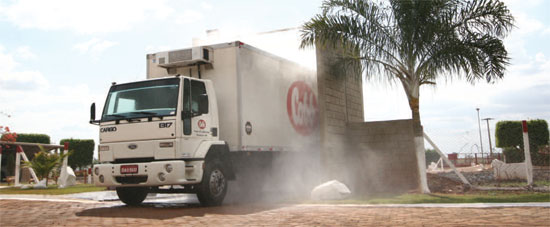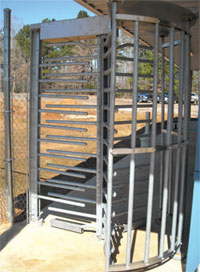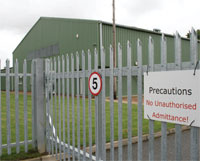



Biosecurity: Doing it Right Every Day
Pete Sbanotto, Cobb product manager, spells out some of the specific ways in which Cobb 'does it right' in the latest issue of Cobb Focus.As the poultry industry continues to become more and more global – with disease challenges able to spread rapidly through regular international travel – the challenge of keeping flocks completely disease free seems daunting at times.
Cobb-Vantress puts the highest priority on maintaining an extremely vigilant level of biosecurity as an everyday routine in caring for breeding flocks. The global biosecurity protocol is constantly being reviewed and strengthened through the efforts of many full-time company employees.
This diverse group of full-time employees includes veterinarians, quality assurance, laboratory, and production managers, as well as hourly staff members who serve on local biosecurity task forces to keep everyone focused on improving biosecurity to maintain the health status and safety of our Cobb flocks.

A standard biosecurity measure that has been in place for a number of years is the concept of a ‘clean’ versus ‘dirty’ area for entry into a production facility. This biosecure barrier has traditionally been present in the form of a physical boundary or separation, and has long been accepted as a means of reducing the introduction of disease pathogens into a production facility or flock.

While simple in concept, this biosecure measure of keeping dirty and clean areas separate requires very specific procedures and must be completed every time by every employee. As part of the company’s commitment to using innovative techniques and being the best, these standard procedures are being constantly enhanced as highlighted in some examples from Cobb locations ‘Doing it Right’.
US: Timberlake Farm – Timpson, Texas
On many farms, a person going from one area of the farm to another (for example, from the rearing facilities to the laying houses) is required to shower and completely change clothes and boots between areas. Traditionally, to enter the changing facility and shower area, this would require the employee to cross through a common room (normally break area, lunchroom or office area) that is located on the ‘clean side’ of the biosecure portion of the farm.
This possible mixing of personnel from different areas of the farm within a common area is a risk for cross-contamination. At Timberlake Farm, this risk has been greatly reduced by adding a one-way turnstile gate through which all employees can re-enter the dirty-side of the shower facility via an external route. This then permits them to shower again and change into a new set of farm clothes without passing through the clean, common area.
Philippines: Cobb-Vantress GP facility at Tanay, Rizal
Rigorous procedures are in place to reduce possible disease entry from vectors such as equipment and vehicles include a disinfecting station at the farm or hatchery entrance. This mandatory vehicle station completely washes and disinfects the total vehicle exterior, wheels and wheel arches, and the undercarriage of the truck with a high-pressure spray system.
BRAZIL: Cobb-Vantress GGP and GP farms


Rodent control is enhanced through using of a rodentproof fencing sys tem completely surrounding the poultry houses. The area immediately surrounding the houses is hard surface and free of vegetation to reduce or eliminate salmonella.
UK: Cobb Europe Elsing Lane GP Hatchery
Maintaining secure entry areas is a key element to limit disease introduction. The Elsing Lane hatchery is completely surrounded by a secure fence with locked gates to limit any unauthorised entry by people, animals and vehicles. Additionally, hatchery personnel must use a secure code to enter the building and are then required to shower before changing into hatchery-only clothing, undergarments and footwear. The Cobb biosecurity entry policy requires all personnel to take a complete shower for a minimum of five minutes. Nailbrushes, soap, shampoo – and even a digital shower timer – are provided to ensure compliance.
For additional entry precaution, the hatchery has a 72-hour minimum ‘no bird contact’ policy and requires Salmonella testing of authorised visitors before entry. During periods of increased disease risk in the poultry industry, this hatchery (like all Cobb facilities) will increase the biosecurity awareness, extend the ‘no-bird contact’ time to five to seven days, and prohibit the entry of non-essential visitors.
Yet, in final consideration, it is always the people who make the difference. Every Cobb employee – every day at every location – is committed to ‘Doing it Right’ and staying focused on biosecurity. This dedication is the best and only way to keep our flocks safe and free from disease.
April 2010








